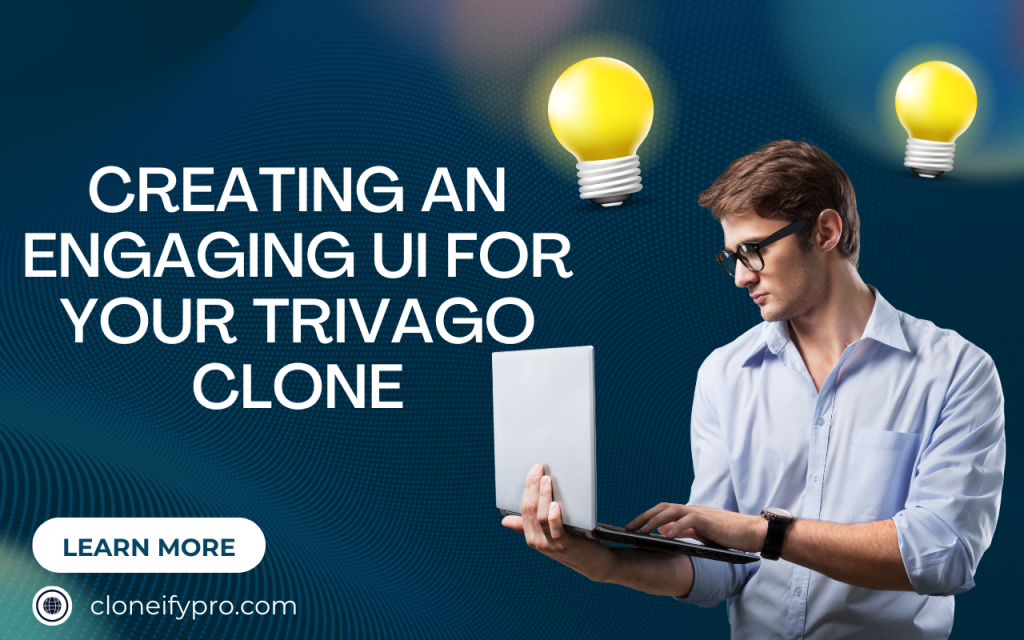
In the competitive world of travel and hospitality, a visually appealing and user-friendly interface can make all the difference. For entrepreneurs looking to launch a Trivago Clone app through CloneifyPro, focusing on an engaging UI is crucial. The design not only impacts user experience but also drives conversions, builds trust, and sets your platform apart from competitors. This blog explores the significance of UI design in a Trivago Clone app and offers insights into creating an interface that captivates users while maximizing engagement.
A Trivago Clone app aims to provide users with a seamless platform for hotel searches, price comparisons, and bookings. The user interface (UI) serves as the bridge between the user and the app’s functionality. A well-designed UI ensures that users can navigate effortlessly, find relevant information quickly, and complete bookings without friction.
Key aspects of UI in a Trivago Clone app include:
Investing in UI design at the development stage ensures higher user satisfaction and retention rates.
A successful Trivago Clone app places the user at the center of its design strategy. Understanding your target audience’s preferences, behaviors, and pain points allows you to create a UI that resonates with them.
Steps to implement a user-centric design:
This approach ensures that your Trivago Clone app meets user expectations and delivers a seamless experience.
The arrangement of elements in your Trivago Clone app significantly impacts usability. Visual hierarchy guides users to the most important information first, reducing cognitive load and enhancing decision-making.
Best practices:
A clean, organized layout not only improves usability but also encourages users to explore more options and complete bookings.
Consistency across the Trivago Clone app fosters familiarity and trust. Using uniform colors, fonts, icons, and button styles ensures users can navigate the app without confusion.
Tips for maintaining consistency:
Consistency strengthens brand identity and improves the overall user experience.
Interactive elements make your Trivago Clone app more engaging and enjoyable. These include:
Such features not only improve user engagement but also encourage repeated app usage.
Given that most travelers use mobile devices for hotel searches, a mobile-first design is essential. Your Trivago Clone app should be optimized for various screen sizes, touch interactions, and mobile-specific features.
Mobile-first design benefits:
Responsive design ensures that your app delivers a consistent and engaging experience across smartphones, tablets, and desktops.
Colors influence user emotions and behavior. Choosing the right color palette for your Trivago Clone app enhances brand identity and affects user decisions.
Considerations:
Strong branding combined with strategic color usage strengthens user engagement and trust.
A visually appealing UI is only effective if the app performs well. Users expect fast loading times, especially when browsing hotels and deals. Slow performance can lead to app abandonment.
Optimization strategies:
A responsive, fast-loading Trivago Clone app enhances the overall user experience and satisfaction.
An engaging UI should be inclusive and accessible to all users, including those with disabilities. Incorporating accessibility features in your Trivago Clone app ensures a broader user base and complies with standards.
Accessibility tips:
Accessibility not only broadens your market reach but also demonstrates social responsibility.
UI design is an ongoing process. Regular user testing and feedback collection help identify pain points and areas for improvement.
Testing methods:
Iterative improvements based on data ensure your Trivago Clone app remains engaging and user-friendly.
The success of a Trivago Clone app heavily relies on an engaging and intuitive UI. From understanding user behavior and creating a visually appealing layout to incorporating interactive features and optimizing mobile performance, every aspect of UI design impacts user satisfaction and app success.
By focusing on UI design and partnering with CloneifyPro for your Trivago Clone app, you can create a platform that not only attracts users but also keeps them engaged, drives bookings, and establishes your brand in the competitive travel app market.
Keywords: Trivago Clone, travel app UI design, engaging mobile app interface, hotel booking app development, mobile-first travel app, user experience in travel apps, CloneifyPro.